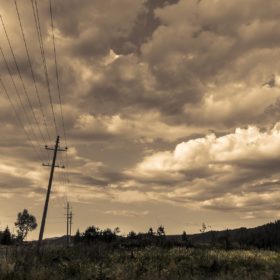
The northern Australian region this week added nine solar plants to the two already threatened – along with a wind farm – with having their output halted under certain conditions.
From pv magazine Australia.
With two solar farms and a wind power facility in northern Queensland told in March they could have their power output curtailed to zero, a further nine solar farms in the northern Australian state were informed this week their output could be limited by grid constraints.
The Australian Energy Market Operator (AEMO) in March warned the 100 MW Haughton and 125 MW Sun Metals solar fields, and the Mt Emerald wind farm, their output could be significantly curtailed – or halted entirely – due to a risk of oscillations caused by inverter-based generation under scenarios such as lightning strikes or bushfires.
AEMO declared an official system strength shortfall in northern Queensland in April and investigated grid requirements with transmission network company Powerlink. System strength represents the ability of a power system to remain stable under normal conditions and return to a steady state following a system disturbance. On Monday, new constraint equations were published by AEMO which could threaten output from nine more solar facilities.
At risk
The solar farms which could be affected are Esco Pacific’s Ross River (148 MW) plant, FRV’s Clare (100 MW), Genex’s Kidston 1 (50 MW), Adani’s Rugby Run (65 MW), Ratch-Australia’s Collinsville (42.5 MW), and four projects in the Edify Energy portfolio: Daydream (180 MW), Hamilton (69 MW), Hayman (60 MW) and Whitsunday (69 MW).
AEMO said limitations on the output of those solar farms would be closely connected to the operation of nearby hydro (Kareeya) and coal (Gladstone, Stanwell and Callide) power stations. The new constraint equations state, under certain conditions relating to the operation of the hydro and coal facilities, the nine solar farms listed could export 80-100% of the power they generate. If the new system combinations are not met, however, solar output at the PV plants concerned will be cut to zero.
The constraints applied on the previously signaled Haughton, Sun Metals and Mt Emerald renewables facilities were unchanged by the new constraint equations. As before, they can operate at full capacity only if Kareeya and fellow hydro station Barron Gorge are running all their units, backed by the Gladstone, Stanwell and Callide coal-fired generators. Under the exceptional conditions previously highlighted, output at the three facilities will be zero.
New challenge
System strength has emerged as a prominent challenge to integrating renewables into Australia’s National Electricity Market (NEM). Before the North Queensland region, AEMO had identified similar system strength shortfalls in South Australia, Tasmania and Victoria. Last year, a gap was declared in the West Murray region of Victoria and New South Wales, where five solar farms totaling more than 350 MW of generation capacity had their output curtailed by half for more than seven months.
The West Murray saga came to an end in April, when AEMO lifted the solar generation constraints after introducing new tuned inverter settings devised by German manufacturer SMA. Since then, AEMO has got on with the pipeline of projects waiting to be connected in that part of the grid. This month, the market operator granted registration of the RWE Renewables-owned 220 MW Limondale Solar Farm near Balranald, in south-west New South Wales – the biggest solar farm in that part of the grid.
Powerlink has already launched a study, partly funded by the Australian Renewable Energy Agency, to examine system strength issues in North Queensland and explore the merits of technical solutions including synchronous condensers, changed inverter settings and strengthening the transmission infrastructure. The transmission company is also considering whether storage technologies such as grid scale batteries could be tied to renewables plants to support system strength.
Synchronous condensers have already been deployed on NEM projects to prop up system strength. However, with that approach entailing additional expense for project developers, AEMO’s Integrated System Plan instead favors a centralized approach to managing the issue and backs the creation of renewable energy zones.
Lắp đặt điện mặt trời Khải Minh Tech
https://ift.tt/2X7bF6x
0906633505
info.khaiminhtech@gmail.com
80/39 Trần Quang Diệu, Phường 14, Quận 3
Lắp đặt điện mặt trời Khải Minh Tech
https://ift.tt/2ZH4TRU
Không có nhận xét nào:
Đăng nhận xét